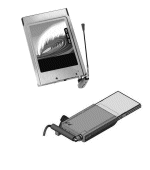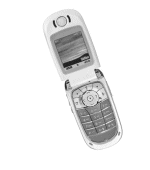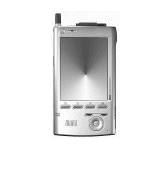Wireless
|
 |
| Wireless appliances are increasingly feature rich and power
hungry. Mobile telephones, personal digital assistants and wireless network cards all use high peak-power
pulses when transmitting that can overload existing batteries and modem card power sources. The answer
has often been to design in overly large batteries sized for peak power. |
| Because this option has a size and weight penalty in device
design, engineers need more innovative power solutions that satisfy the power-pulse demands and
size/weight requirements of these devices. |
| With their small, thin form factor and high energy storage
capacity, CAP-XX supercapacitors are ideally suited to meet the power-pulse needs of wireless components
and appliances. Additionally, their low ESR and
high capacitance values extend battery run time, reduce design costs through component elimination,
and enable a rapid time to market.
|
PCMCIA and Compact Flash

Wireless devices capable of delivering 2.5G, 3G, 802.16 and 4G communication services face a critical shortage
of power. Pulse transmissions generally exceed the power limitations of wireless modem devices such as
PCMCIA, CompactFlash®, USB and mini PCI cards, leading manufacturers to seek components that
consume less power and even add batteries to the products
CAP-XX supercapacitors actually enable battery elimination while providing the high current pulses needed
for wireless transmission. These small, thin devices permit low temperature operation and reduce EMI noise
to improve transmission reliability and signal quality.
 Related documents and briefs Related documents and briefs
Mobile Phones 
Competitive pressures have driven mobile phone manufacturers to achieve superior power management results
– best battery cycle life, standby performance, shortest charge time, smallest size and minimal weight.
But mobile phones have high power demands when transmitting data. During transmission, pulse power trains
cause battery voltage to sag and efficiency to drop, ultimately shortening the battery’s useful life.
CAP-XX supercapacitors optimize battery utilization by buffering power demand and smooth fluctuating loads,
thus increasing mobile talk time and battery longevity. These devices operate in extreme temperature
conditions, and can be charged/discharged thousands of times without degradation. CAP-XX supercapacitors
also enable a simple GSM phone solution with excellent talk-time using standard AAA or AA alkaline batteries
enabling new applications such as 911 phones wherecost and long shelf life are critical.
 Related documents and briefs Related documents and briefs
Ruggedized PDAs

Ruggedized PDAs face a critical shortage of power, particularly at low temperatures. The high pulse power
needed for the radio frequency transmissions or new display technologies such as OLED can strain existing
batteries. This overload situation quickly lowers voltage and triggers premature shut-down (leaving spare
energy in the battery), thus decreasing overall communications time and the useful life of the battery.
A supercapacitor can eliminate this problem. Working in tandem with the battery, the supercapacitor
discharges its power during peak loads and recharges between peaks, provides the support power needed
to operate the PDA for much longer periods, enables memory back up,
battery chatter recovery, and battery hot-swapping
capabilities, and reduces excessive power load to extend the battery’s life cycle.
 Related documents and briefs Related documents and briefs
Wireless Sensor Networks
Wireless sensor networks enable long-term environmental monitoring or object tracking through large
numbers of unconnected sensor nodes. Because of their large deployment, sensor nodes are expected
to be inexpensive to manufacture, small in size, and able operate for many months.
While standard consumer AA or coin-style batteries keep sensor nodes active for up to a year, CAP-XX
supercapacitors can work with the battery configuration to extend the life of each node by providing peak
power during transmissions as needed while easily conforming to form factor limitations. Supercapacitors
are also an excellent power storage solution solar cells, thermoelectrics, and other alternate power solutions
for wireless sensor devices.
 Related documents and briefs Related documents and briefs
|